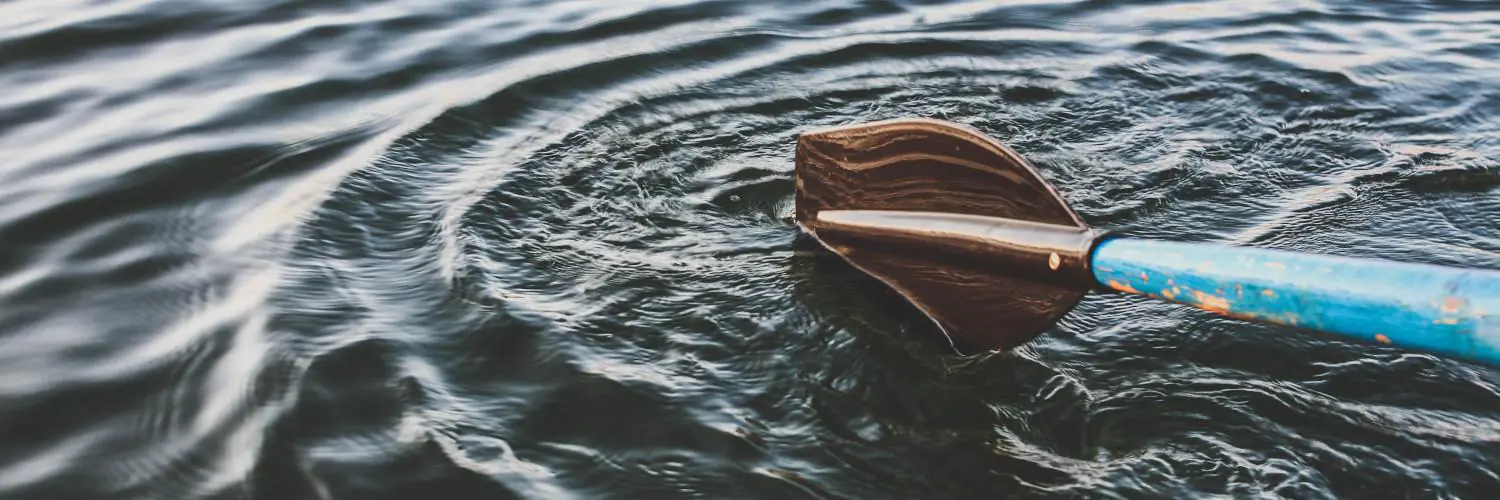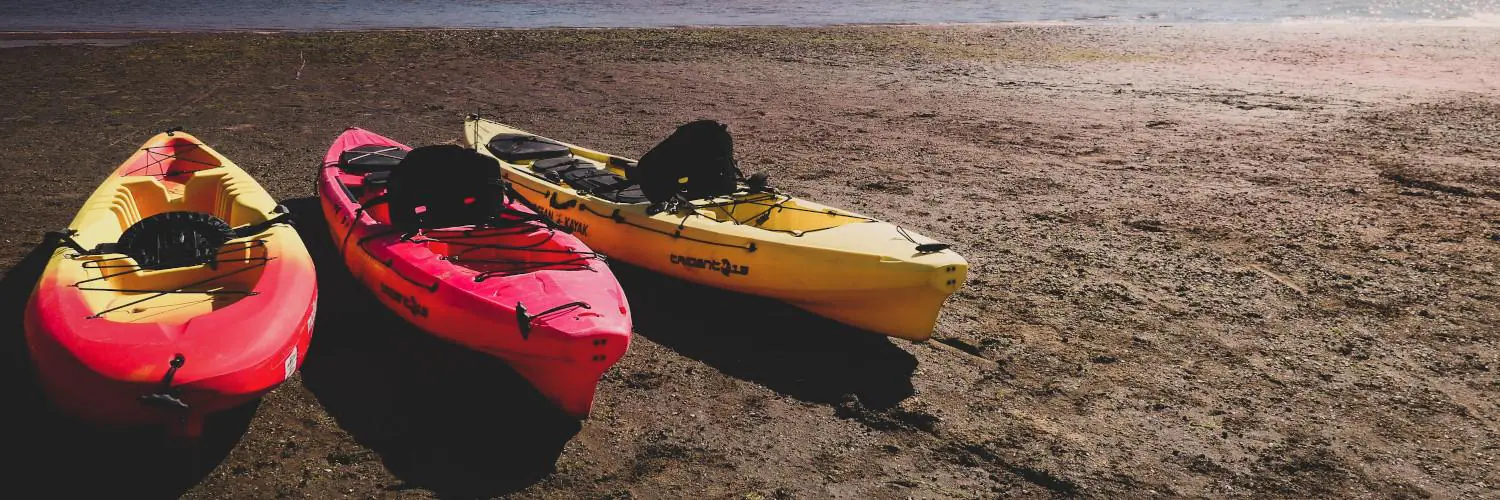Many people who own kayaks eventually face the question of whether drain plugs are interchangeable across different models. Kayak drain plugs are not truly universal, but many options are designed to fit a wide range of kayaks. This means some plugs can work across brands, while others require a specific size or style to create a proper seal.
Understanding compatibility is important because a poor fit can let water in and affect safety on the water. Some kits include the most common sizes, making them useful for many kayaks, but not every boat will match these standard options. Knowing what to look for helps avoid frustration and ensures the kayak stays dry.
This topic connects directly to practical choices every paddler makes. By learning about compatibility, types of plugs, and how to maintain them, anyone can keep their kayak in better condition and avoid problems during use.
Table of Contents
Are Kayak Drain Plugs Universal?
Kayak drain plugs help manage water inside the hull, but their compatibility varies depending on design. Some plugs are marketed as universal, while others are specific to certain brands or models. Understanding the differences helps paddlers choose the right option and avoid leaks or poor fit.
Defining Drain Plugs and Their Purpose
A drain plug is a small fitting placed in the hull of a kayak to let water out after use. It usually sits at the stern or another low point where water collects. By removing the plug, paddlers can empty water without tipping or lifting the kayak.
Drain plugs are not the same as scupper plugs. Scupper plugs block self-bailing holes on sit-on-top kayaks, while drain plugs seal the hull itself. Both prevent unwanted water entry, but they serve different purposes.
Most drain plugs use either a threaded design or a push-in rubber style. Threaded plugs are common on recreational and fishing kayaks, while push-in plugs appear on some older or budget-friendly models. Both types rely on a tight seal to keep the kayak dry.
Without a working drain plug, water can build up inside the hull. This added weight makes the kayak harder to handle and less safe on the water. For this reason, keeping a proper plug installed is considered essential.
Overview of Universal Drain Plug Claims
Some products are sold as universal drain plugs. These kits often include more than one thread size, such as wide-thread and fine-thread plugs. The goal is to cover the most common designs used by major kayak brands.
Universal kits usually come with washers, mounting flanges, and stainless steel hardware. They may also recommend adding waterproof silicone for a stronger seal. This setup allows many paddlers to replace lost or worn plugs without searching for brand-specific parts.
However, “universal” does not mean guaranteed to fit every kayak. Certain models use unique plug sizes or shapes that fall outside the common standards. In those cases, a universal kit may not provide a secure seal.
Many paddlers find universal kits useful as spares. Keeping both thread styles on hand can solve most replacement needs, especially for group trips where different kayak brands are in use.
Key Differences Between Universal and Model-Specific Plugs
Model-specific plugs are designed to match the exact threading and housing of a particular kayak brand. For example, Pelican and Lifetime kayaks often use their own plug assemblies, which may not fit with general kits. These plugs usually provide the most reliable fit and seal.
Universal plugs, while versatile, rely on covering common thread sizes rather than exact specifications. This can result in a looser fit if the kayak’s threading is slightly different. A poor fit may allow slow leaks or require extra sealant to stay watertight.
The choice often comes down to convenience versus precision. Universal kits are easier to find and cost-effective, while brand-specific plugs ensure a tighter, factory-level fit.
Paddlers who own multiple kayaks may benefit from universal kits. Those with a single kayak, especially from a brand with unique fittings, often prefer the security of model-specific plugs.
In short, the main differences center on fit, reliability, and compatibility. Universal plugs aim for wide coverage, while model-specific plugs focus on exact match and long-term performance.
Compatibility Factors for Kayak Drain Plugs
Kayak drain plugs vary in size, material, and design, which affects how well they fit different boats. Some plugs are designed to work with a wide range of kayaks, while others are specific to certain brands or models.
Thread Types and Sizes
Drain plugs often differ in their thread style. The two most common are wide thread and fine thread plugs. Wide thread plugs have deeper grooves and are usually paired with a red washer, while fine thread plugs use tighter grooves and often include a black washer.
A plug with the wrong thread type will not seal properly. This can allow water to leak into the hull, which reduces safety and performance. Because of this, many universal kits include both thread types to cover the majority of kayaks and paddleboats.
Measuring the existing plug or checking the manufacturer’s specifications helps avoid mismatches. A poorly sized plug can strip the threads or loosen over time, making it less reliable.
Material Considerations
Most kayak drain plugs are made from plastic, which is lightweight, affordable, and resistant to corrosion. Some plugs include rubber gaskets or washers to improve the seal and prevent leaks.
While plastic is common, not all plastics are the same. Higher-quality plugs use durable polymers that resist cracking under stress or exposure to sunlight. Lower-grade plugs may wear out faster, especially if they are removed and reinstalled often.
Metal hardware, such as stainless steel screws, is often included in replacement kits. Stainless steel resists rust in wet environments, which makes it a reliable choice for long-term use. Using waterproof silicone during installation can also improve the seal and extend the life of the plug.
Brand and Model Variations
Not all kayaks use the same drain plug design. Some brands, such as Pelican, Sun Dolphin, or Vibe Kayaks, may use different plug sizes or shapes that are not interchangeable. Even within the same brand, models can vary in plug style.
Universal drain plugs fit many boats, but they may not cover every design. For example, some kayaks have unique flange shapes or hole diameters that require a brand-specific plug.
Checking the kayak’s manual or contacting the manufacturer is the most reliable way to confirm compatibility. When the original plug is lost, matching the thread type, size, and design to the kayak model ensures a secure fit.
Types of Kayak Drain Plugs
Kayak drain plugs come in different forms, each designed for specific hull styles and water conditions. The main differences are in how they seal the opening and where they are used on the kayak.
Scupper Plugs vs. Traditional Drain Plugs
Scupper plugs are made for sit-on-top kayaks that have scupper holes running through the hull. These plugs seal the holes to keep water from entering while still being easy to remove when draining is needed. They are usually rubber or silicone and often come in sets since most kayaks have several scupper holes.
Traditional drain plugs, sometimes called screw-in plugs, are more common on sit-inside kayaks and paddleboats. They are usually placed at the stern or lowest point of the hull. Their main purpose is to let water out after paddling, not to block water during use.
The table below highlights the main differences:
| Feature | Scupper Plug (Sit-on-Top) | Traditional Drain Plug (Sit-Inside) |
|---|---|---|
| Placement | Scupper holes | Stern or hull opening |
| Main Function | Block water entry | Drain water after use |
| Material | Rubber/Silicone | Plastic with threads |
| Quantity Needed | Multiple | Usually one |
O-Ring and Gasket Designs
Many screw-in drain plugs rely on an O-ring or gasket to form a watertight seal. Without this extra layer, water can seep through the threads, especially under pressure or when the kayak is stored in water.
O-rings are usually rubber rings that sit inside the plug’s groove. Gaskets, on the other hand, are flat washers that press against the hull surface. Both serve the same purpose—tightening the seal and preventing leaks.
Some universal drain plug kits include both coarse-thread and fine-thread plugs, each with its own sealing washer. This helps them fit a wider range of kayaks. Regular inspection of O-rings and gaskets is important, since worn or cracked seals are a common reason for leaks.
Using waterproof silicone during installation can also improve the seal, especially on older kayaks where the hull surface may not be perfectly smooth.
Selecting the Right Drain Plug for Your Kayak
Choosing a proper drain plug depends on accurate sizing, durable materials, and ease of use. A good fit prevents leaks, while quality construction ensures the plug lasts through repeated trips and exposure to water.
Measuring Drain Hole Dimensions
The first step is to measure the kayak’s drain hole. A plug that is too small will not seal, while one that is too large will not fit. Using a caliper or ruler, measure the diameter of the hole in either inches or millimeters.
Many kayaks use common sizes, such as 1/2 inch or 1 inch, but variations exist. Some plugs use threaded fittings, while others are smooth push-in types. Matching the thread type, if present, is just as important as the diameter.
A quick reference can help:
| Hole Type | Common Plug Style | Notes |
|---|---|---|
| Smooth round hole | Push-in tapered plug | Simple to install and remove |
| Threaded hole | Screw-in drain plug | Requires matching thread pitch |
| Scupper hole | Scupper plug | Found on sit-on-top kayaks |
Measuring carefully saves time and prevents buying the wrong kit.
Assessing Material Durability
Drain plugs are often made from rubber, silicone, or plastic, sometimes paired with stainless steel hardware. Rubber and silicone plugs provide a flexible seal, while hard plastic plugs with threads offer a more permanent fit.
For saltwater use, plugs with stainless steel screws or chains resist corrosion better than standard steel. A plug with a tether or chain also reduces the chance of losing it during transport or on the water.
Durability matters because a worn washer or cracked plug can allow leaks. Replacing a low-quality plug often costs more in the long run than buying a sturdy one at the start. Choosing UV-resistant materials also helps prevent damage from sun exposure.
Installation and Removal Tips
Installing a drain plug should be straightforward if the right size and type are chosen. Before installation, cleaning the hole of sand or debris ensures a tight seal. If adding a new plug, applying a marine-grade sealant around the fitting helps prevent leaks.
When tightening a screw-in plug, it is best to secure it firmly but avoid over-tightening, which can strip threads. Push-in plugs should fit snugly without forcing them into the hole.
For removal, a plug with a pull tab or tether makes the process easier. If a plug sticks, a small twist usually loosens it. Regular checks before each trip confirm that the plug is seated correctly and not worn.
Proper installation and removal habits extend the life of the plug and help maintain a dry kayak interior.
Maintenance and Replacement of Kayak Drain Plugs
A kayak drain plug works best when it fits tightly, stays free of debris, and is checked often for damage. Regular care helps prevent leaks and makes replacement easier when parts no longer seal properly.
Signs of Wear and When to Replace
Drain plugs are small, but they take on a lot of stress from water pressure, sun exposure, and frequent use. Over time, the rubber or plastic can crack, harden, or lose flexibility. A plug that no longer seals tightly may let water seep into the hull.
Kayakers should look for visible cracks, worn threads, or loose fit. If the plug wiggles inside the drain hole or requires extra force to tighten, it is likely worn out.
Another sign is water pooling inside the kayak even after the plug is secured. In this case, replacing the plug is usually more effective than trying to patch it.
Keeping a spare plug on hand is a smart practice since many models use similar but not identical sizes. Universal kits often include the two most common plug types, making them a practical backup option.
Cleaning and Care Best Practices
Routine cleaning helps extend the life of drain plugs. After each trip, rinsing the plug with fresh water removes sand, salt, or dirt that can grind against the threads or gasket.
It is best to let the plug dry before storing the kayak. Moisture left in the plug housing can lead to mildew or corrosion around the hardware.
Applying a small amount of waterproof silicone grease can keep the plug flexible and improve the seal. This is especially useful for plugs made of rubber that may stiffen over time.
When reinstalling, avoid overtightening. A snug fit is enough to create a seal, while too much force can strip the threads or damage the flange. Regular checks and gentle care help the plug last longer and perform reliably.








